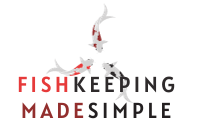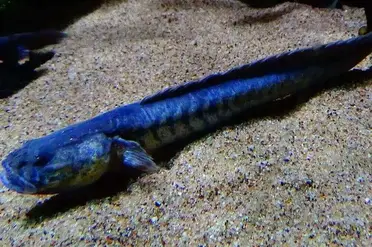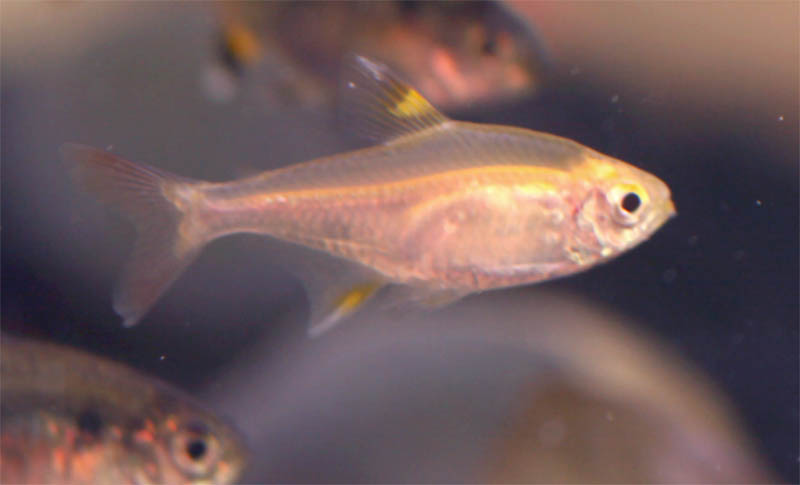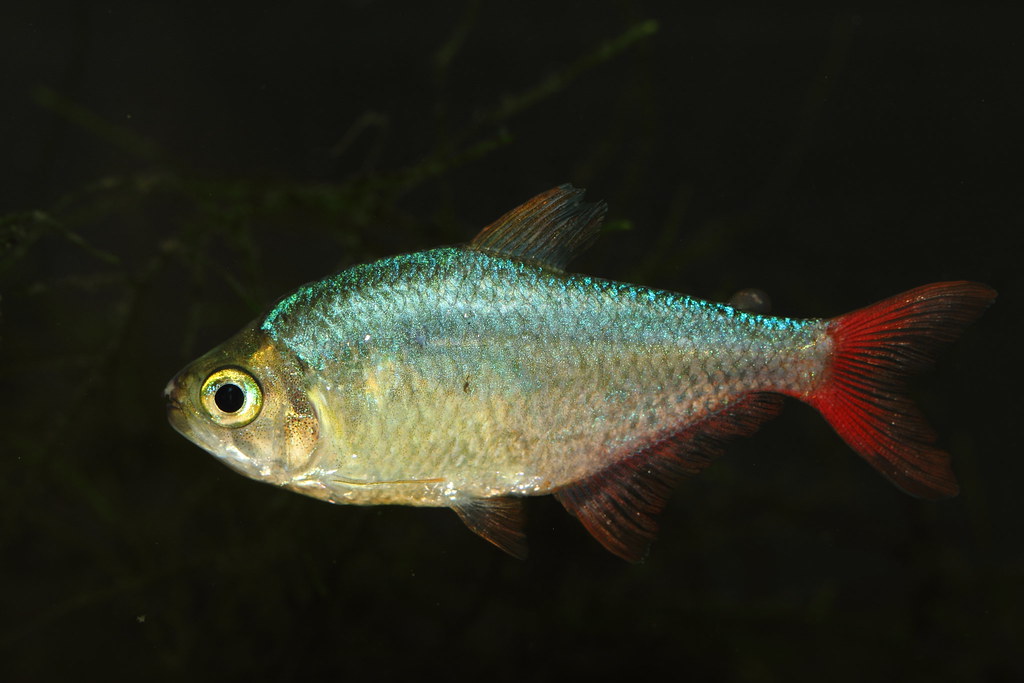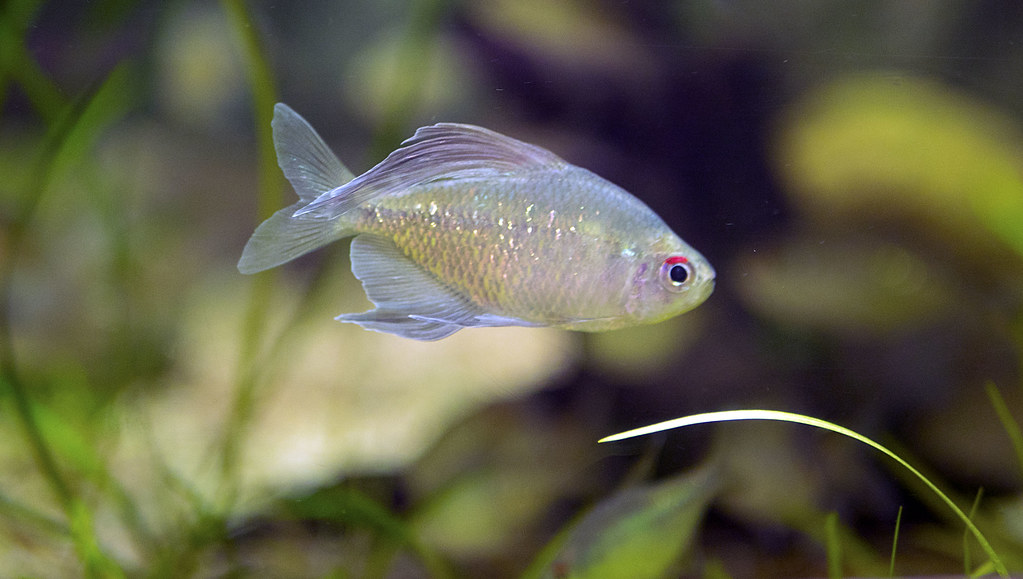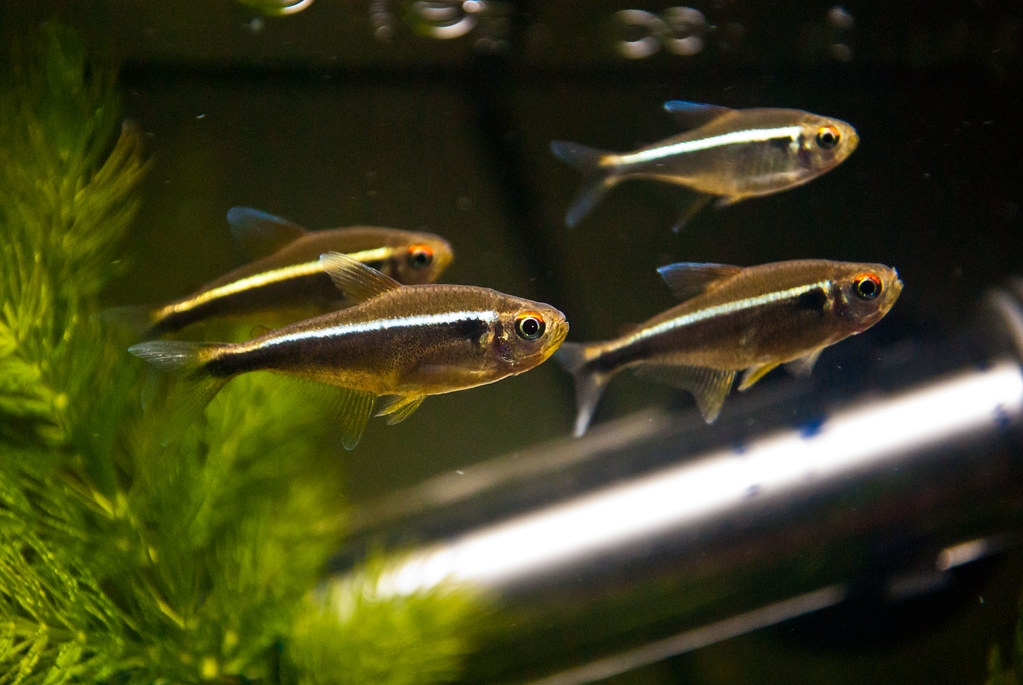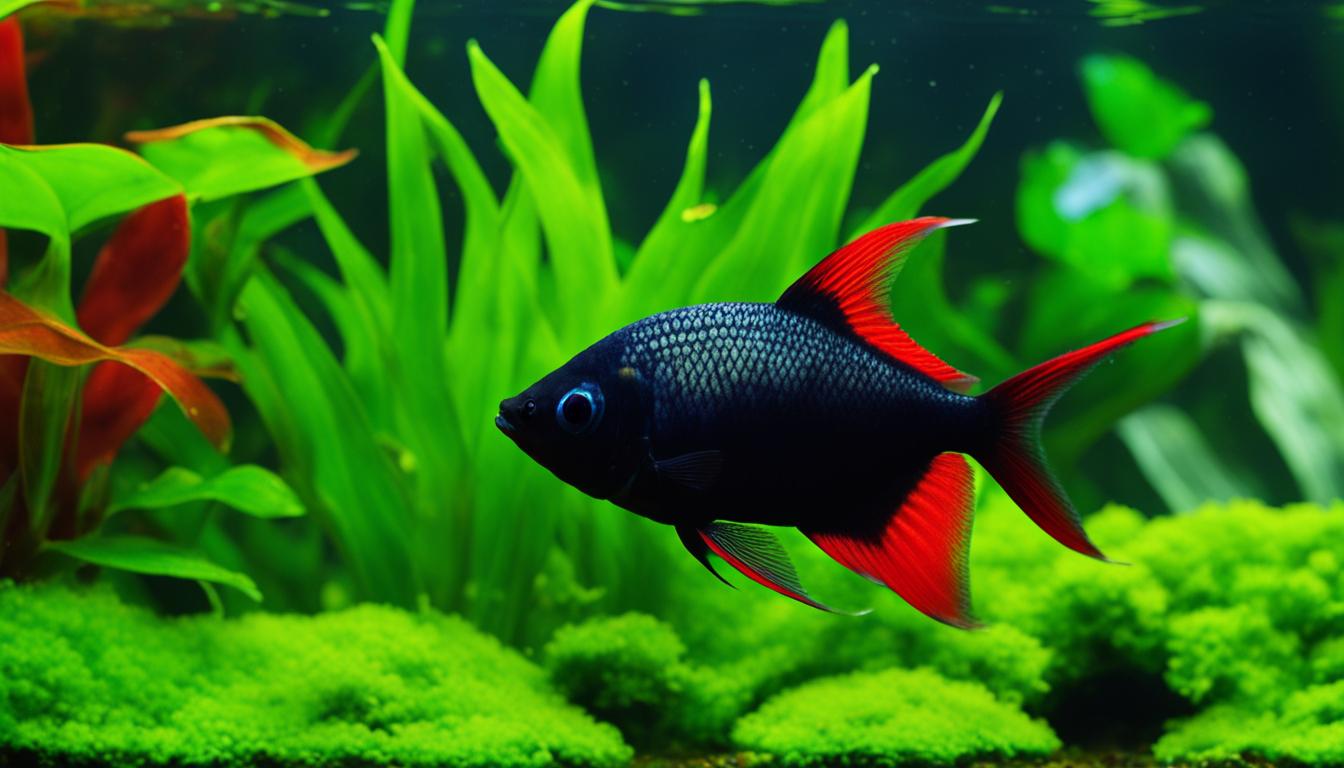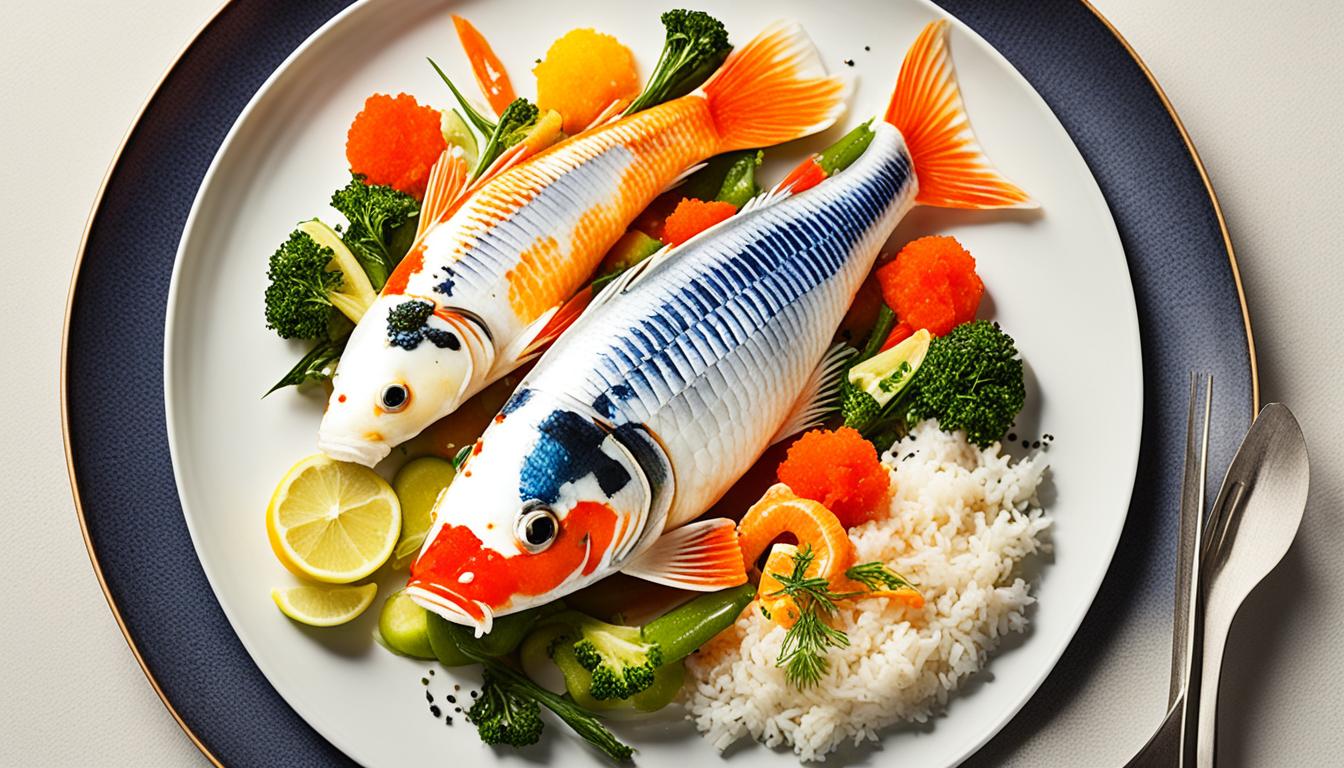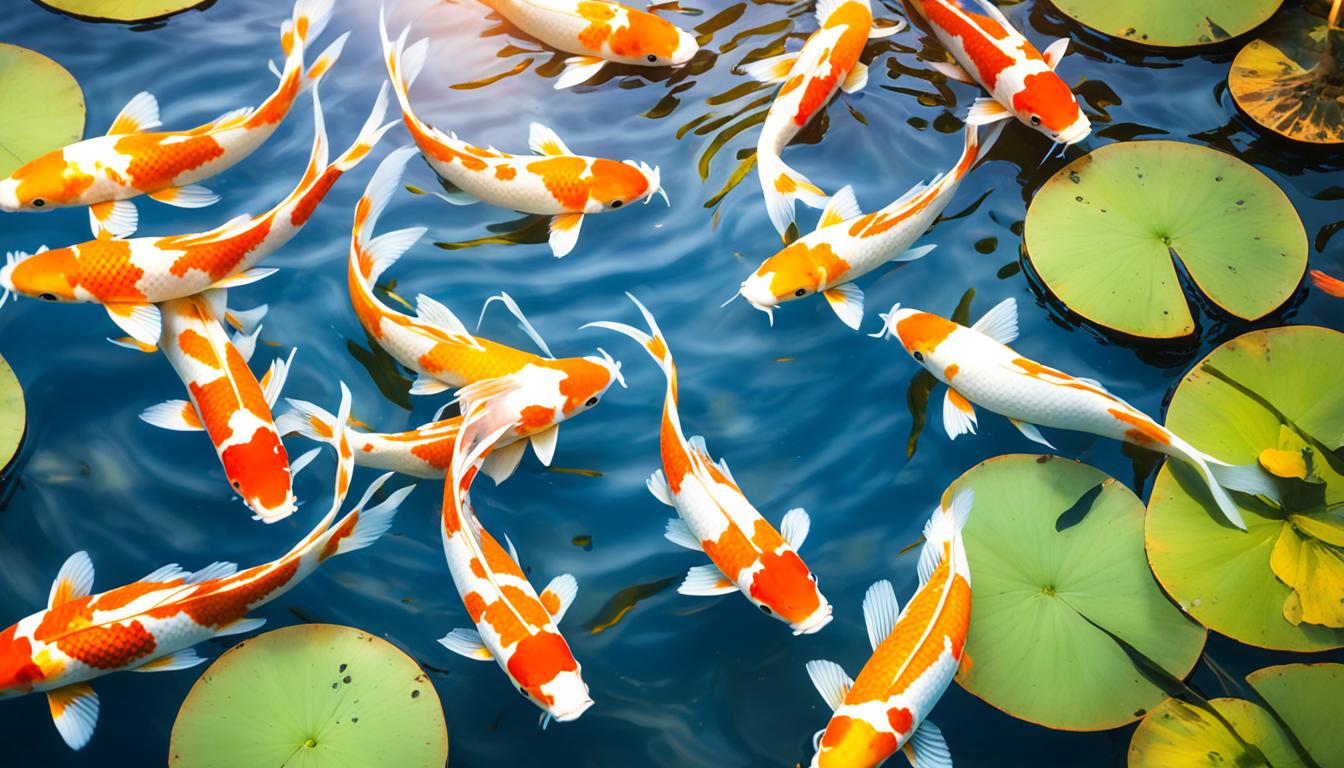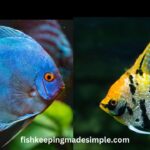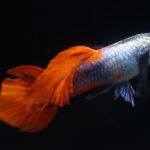Dragon Goby Saltwater, also known as Banded Dragon Goby, is a reef-safe fish that can potentially deposit sand on clams or corals placed low in the aquarium. These fish have sharp teeth and are scavengers, feeding on small worms, snails, crabs, and other foods found in the sand and mud.
In the aquarium, they can be fed frozen black tubifex, bloodworms, sinking shrimp pellets, algae wafers, and flake food. They make good tank mates with guppies, archers, monos, bichirs (in large tanks), glassfish, bumblebee gobies, swordtail fish, and ghost shrimp.
Banded Dragon Gobies are available for sale from various online retailers and are cared for by maintaining the right tank size, providing suitable tank mates, and ensuring proper feeding.
Table of Contents
Understanding Dragon Goby – A Fascinating Species
The Dragon Goby, a captivating saltwater species, is known for its unique behavior and stunning appearance. This fascinating fish is a sand sifter and can eat nuisance flatworms, making it an excellent addition to any reef tank.
Overview Of The Dragon Goby And Its Unique Characteristics
The Dragon Goby, also known as Amblygobius phalaena, is a fascinating species of fish found in saltwater environments. It is known for its distinctive physical appearance and interesting behavior. Let’s dive deeper into the intricate details of this captivating creature.
Intricate Details About The Physical Appearance And Behavior Of Dragon Gobies
- Physical Appearance:
- Dragon Gobies have elongated bodies that can reach up to 6 inches in length.
- They have a unique coloration, featuring a combination of black and white stripes along their bodies.
- These gobies have large pectoral fins that resemble dragon wings, hence their name.
- Their eyes are positioned on the top of their heads, allowing them to keep an eye out for predators while hiding in the sand.
- Behavior:
- Dragon Gobies are known for their sand-sifting behavior, which involves continuously sifting through the substrate in search of food.
- They have a symbiotic relationship with pistol shrimps, where they share burrows for both protection and foraging purposes.
- These gobies are peaceful in nature and can coexist with other non-aggressive fish species in a community tank.
- They are not known to be jumpers, so a secure aquarium lid is not necessary, but providing enough sand for them to bury themselves is crucial for their well-being.
The Dragon Goby is a captivating fish species with its unique physical appearance and interesting behavior. From their dragon-like fins to their sand-sifting habits, these gobies are sure to be a delightful addition to any saltwater aquarium.
Setting Up The Perfect Tank For Dragon Gobies
Setting up the perfect tank for Dragon Gobies involves selecting suitable tank mates like Guppies, Archers, Monos, and maintaining a clean environment with proper feeding of frozen tubifex and blood worms. These scavengers have a unique diet of small worms, snails, and crabs.
Dragon Gobies, also known as Dragon Sleeper Gobies, are fascinating fish that can make stunning additions to a saltwater aquarium. To ensure their wellbeing and create a great environment for them to thrive, it’s crucial to set up the perfect tank.
In this section, we’ll cover two important aspects: choosing the appropriate tank size and tank mates, as well as ensuring ideal water parameters and quality.
Choosing The Appropriate Tank Size For Dragon Gobies:
- Dragon Gobies can grow quite large, reaching up to 24 inches in length. Therefore, it’s essential to provide them with a spacious tank to accommodate their size and behavior.
- A minimum tank size of 75 gallons is recommended for a single Dragon Goby. However, a larger tank, such as a 100-gallon or more, would be even better.
- Providing a tank with ample swimming space and plenty of hiding spots, such as caves and PVC pipes, is crucial for their well-being.
Choosing Tank Mates For Dragon Gobies:
- Dragon Gobies are generally peaceful and can be kept with other saltwater fish, as long as their tank mates are compatible.
- Avoid keeping them with aggressive or territorial species that might harass or outcompete them for food.
- Good tank mates for Dragon Gobies include peaceful fish like Clownfish, Cardinalfish, Damsels, and some small Angelfish.
- However, it’s important to research each potential tank mate’s specific behavior and compatibility before introducing them to the same tank.
Ensuring Ideal Water Parameters And Quality For Dragon Gobies:
- Dragon Gobies are native to brackish and saltwater environments. Therefore, it’s crucial to maintain appropriate water parameters to mimic their natural habitat.
- The recommended salinity range for Dragon Gobies is around 1.018 to 1.022 specific gravity.
- The water temperature should be maintained between 72°F and 78°F.
- Regular monitoring of water parameters, including ammonia, nitrite, and nitrate levels, is vital to ensure optimal water quality for these sensitive fish.
- Providing a well-established biological filtration system and performing regular water changes will help maintain excellent water quality.
By following these guidelines and setting up the perfect tank, you can provide a healthy and stimulating environment for your Dragon Gobies. Remember to monitor their behavior and adjust their tank mates and water parameters accordingly to create a stress-free and thriving aquarium ecosystem.
Care And Maintenance For Dragon Goby
The care and maintenance for Dragon Goby in a saltwater tank includes feeding them frozen black tubifex and bloodworms, along with sinking shrimp pellets. They are reef-safe and have a diet of small worms, snails, and other foods found in the sand and mud.
Compatible tank mates include guppies, archers, and bumblebee gobies.
Dragon Gobies, also known as banded dragon gobies, are fascinating and unique saltwater fish that require specific care and maintenance to thrive in an aquarium setting. In this section, we will explore the feeding habits and nutrition requirements of Dragon Gobies, as well as how to create a suitable habitat for them.
Feeding Habits And Nutrition Requirements Of Dragon Gobies:
- Dragon Gobies are bottom-dwelling fish that primarily feed on small invertebrates and algae in the wild.
- Their diet should consist of a variety of live or frozen foods, including brine shrimp, bloodworms, mysis shrimp, and small crustaceans.
- It is essential to provide a balanced and nutritious diet to ensure their overall health and well-being.
- Offer small meals multiple times a day, as Dragon Gobies have small stomachs and benefit from frequent feedings.
- Be mindful not to overfeed them, as this can lead to health issues and pollute the water quality in the tank.
- Additionally, consider supplementing their diet with high-quality marine pellet or flake food specifically formulated for bottom-dwelling fish.
Creating a suitable habitat with adequate hiding spots and substrate:
- Dragon Gobies require an aquarium with a sandy substrate as they are sand sifters. The sandy substrate allows them to bury themselves and filter out food from the sand.
- Provide a thick layer of sand, at least two inches deep, to allow for burrowing and sifting behavior.
- The tank should be at least 30 gallons in size, as Dragon Gobies can reach a length of up to 6 inches.
- Ensure the tank has adequate hiding spots such as rocks, caves, or PVC pipes to mimic their natural habitat and give them a sense of security.
- Keep the tank well-maintained with regular water changes and proper filtration to maintain optimal water quality.
- Dragon Gobies prefer a specific gravity of 1.020 to 1.025 and a temperature range of 72 to 82 degrees Fahrenheit.
- It’s important to maintain stable water conditions, as Dragon Gobies are sensitive to fluctuations in water parameters.
Providing proper care and maintenance for Dragon Gobies involves understanding their feeding habits and nutrition requirements, as well as creating a suitable habitat with adequate hiding spots and substrate. By meeting these needs, you can ensure the health and well-being of these fascinating saltwater fish in your aquarium.
Breeding Dragon Gobies – A Rewarding Experience
Breeding Dragon Gobies in a saltwater tank is a rewarding experience. These unique creatures add beauty and fascination to your aquarium while also helping to control nuisance flatworms and other pests.
Insights Into The Breeding Behavior And Compatibility Of Dragon Gobies:
- Dragon Gobies, also known as Dragon Sleeper Gobies, are a fascinating species of saltwater fish that are sought after by many aquarium enthusiasts. Breeding these magnificent creatures can be a rewarding experience, as it allows you to witness their unique and intricate reproductive behaviors. Here are some insights into the breeding behavior and compatibility of Dragon Gobies:
- Breeding Pair: Dragon Gobies are monogamous and form pairs for breeding purposes. It is essential to select a compatible male and female pair to ensure successful reproduction.
- Compatibility with Tank Mates: Dragon Gobies are generally peaceful and can coexist with other peaceful fish species. However, it is crucial to consider their territorial nature and choose tank mates accordingly. Avoid placing aggressive or territorial fish in the same tank as the breeding pair, as it can lead to stress and hinder the breeding process.
- Burrow Building: Male Dragon Gobies are known for their elaborate burrow-building behaviors. They construct intricate tunnels in the sand substrate using their mouths and bodies. These burrows serve as their breeding grounds and provide a safe and protected environment for both the male and female.
- Courtship Display: The male Dragon Goby initiates the courtship display by swimming around the female, showing off his vibrant coloration and flaring his dorsal fins. This display is followed by the male leading the female to the burrow he has constructed.
- Laying and Fertilization: Once inside the burrow, the female Dragon Goby will deposit a batch of eggs on the walls of the burrow using her pelvic fins. The male then fertilizes the eggs by releasing sperm over them.
- Incubation Period: The eggs are carefully guarded by the male Dragon Goby, who will fan the eggs with his pectoral fins to provide oxygen and remove any debris. The incubation period can vary between 5 to 7 days, depending on environmental conditions such as water temperature and quality.
- Hatching of Fry: After the incubation period, the fry will hatch from the eggs. They are initially transparent, tiny, and have a yolk sac attached to their bodies. The male continues to protect and care for the fry until they are fully independent.
- Raising Fry: Once the fry have fully absorbed their yolk sacs and are ready to venture out, it is recommended to move them to a separate rearing tank. Provide suitable food options such as newly hatched brine shrimp and powdered fry food to ensure their proper growth and development.
- Additional Considerations: Maintaining optimal water conditions is crucial for successful breeding. Ensure that the temperature, salinity, and pH levels are suitable for the Dragon Gobies. Regular water changes and proper filtration are essential for maintaining a healthy breeding environment.
- Patience and Observation: Breeding Dragon Gobies requires patience and careful observation. Monitoring their behavior, ensuring the ideal tank conditions, and providing proper nutrition are key factors in achieving successful breeding results.
Step-By-Step Guide To Successfully Breed And Raise Their Fry:
- Breeding Dragon Gobies can be a fulfilling and rewarding experience for any aquarist. Here is a step-by-step guide to help you successfully breed and raise their fry:
- Selecting a Breeding Pair: Choose a compatible male and female Dragon Goby pair with vibrant coloration and good overall health. Ensure that they are of mature age, as younger fish may not have reached sexual maturity.
- Setup a Breeding Tank: Prepare a separate breeding tank with suitable conditions for the Dragon Gobies. Provide a sand substrate for burrow building and ample hiding spots. Maintain optimal water parameters, including temperature, salinity, and pH levels.
- Conditioning the Breeding Pair: Prior to introducing the breeding pair to the breeding tank, condition them with a nutritious diet consisting of high-quality frozen or live foods. This will enhance their reproductive capabilities.
- Introducing the Breeding Pair: Gently introduce the male and female Dragon Gobies to the breeding tank, ensuring a smooth transition. Observe their behavior closely to ensure compatibility and the initiation of courtship displays.
- Burrow Building and Courtship: The male Dragon Goby will start constructing an elaborate burrow using his mouth and body. The female will follow the male’s lead and inspect the burrow. The courtship display includes the male swimming around the female, showcasing his vibrant coloration, and flaring his dorsal fins.
- Egg Laying and Fertilization: Once the female is comfortable with the burrow, she will deposit a batch of eggs on the burrow walls using her pelvic fins. The male then fertilizes the eggs by releasing sperm over them.
- Incubation Period: The male Dragon Goby will diligently guard and care for the eggs throughout the incubation period. Provide proper lighting and maintain stable water conditions to support the eggs’ development. Avoid disturbing the burrow during this crucial phase.
- Hatching of Fry: After the incubation period, the fry will hatch from the eggs. At this stage, they are tiny and have a yolk sac attached to their body. The male will continue to protect and care for the fry until they are ready to venture out on their own.
- Moving Fry to Rearing Tank: Once the fry are fully independent and have absorbed their yolk sacs, carefully transfer them to a separate rearing tank. Ensure that the tank is appropriately sized, has suitable filtration, and provides ample hiding spots for the fry.
- Feeding the Fry: Offer the fry suitable food options such as newly hatched brine shrimp, micro worms, or powdered fry food. Feed them small, frequent meals throughout the day to support their growth and development.
- Monitoring and Maintenance: Regularly monitor the water parameters in the rearing tank and perform necessary water changes. Observe the fry’s behavior and growth to ensure they are thriving. Make any adjustments or changes to the rearing tank environment as needed.
By following these steps and providing proper care and attention, you can successfully breed and raise Dragon Gobies in your aquarium, giving you the opportunity to witness this incredible natural phenomenon.
Common Issues And Troubleshooting For Dragon Goby
The Dragon Goby, a popular saltwater fish, can encounter common issues such as sand deposition on low-lying aquarium items and a preference for small food. However, these gobies are known for their ability to eat nuisance flatworms and can coexist with certain tank mates like guppies, archers, and bumblebee gobies.
Identifying And Resolving Common Health Issues In Dragon Gobies:
- Loss of appetite: If your Dragon Goby suddenly stops eating, it could be a sign of stress or illness. Monitor its behavior and check water parameters to ensure the tank conditions are optimal. Consider offering a variety of foods to entice the Goby to eat.
- Skin discoloration: Changes in the Dragon Goby’s skin color could indicate a health issue. Pale or faded coloration may indicate stress or poor water quality, while dark or blotchy patches could be a sign of infection or injury. Regular water changes and proper tank maintenance can help prevent these issues.
- Fin damage: Damaged or torn fins are common in Dragon Gobies. This can occur due to aggressive tank mates or sharp decorations. Providing plenty of hiding spots and avoiding aggressive tank mates can help prevent fin damage. If your Goby’s fins are injured, clean water and a stress-free environment will aid in healing.
Tips For Preventing And Managing Aggression And Territorial Behavior:
- Tank size: Dragon Gobies need plenty of room to swim and establish territories. A larger tank with ample hiding spots and separate territories can help reduce aggression.
- Compatible tank mates: Choosing peaceful tank mates that won’t compete for the same territory or food can help minimize aggression. Consider species such as peaceful gobies, blennies, and small wrasses.
- Hiding spots: Providing plenty of hiding spots, such as caves, PVC pipes, and live rock, allows Dragon Gobies to establish their own territories and reduces territorial disputes.
- Feed appropriately: Ensuring that all tank inhabitants are well-fed can reduce aggression caused by competition for food. Consider feeding your Dragon Goby after the lights are off to allow it to feed without interference.
- Monitor behavior: Regularly observe your Dragon Goby for any signs of aggression. Keep an eye out for fin-nipping, chasing, or territorial behavior. If aggression becomes a serious issue, consider separating the aggressor or rehoming it.
Remember, proper tank maintenance, providing suitable tank mates, and creating a stress-free environment are key to preventing and managing aggression in Dragon Gobies.
Frequently Asked Questions About Dragon Gobies
Dragon Goby, also known as the banded dragon goby, is a saltwater fish that is reef safe and known for its ability to eat nuisance flatworms. They eat frozen black tubifex, blood worms, sinking shrimp pellets, and can also consume algae wafers and flake food.
They make great tank mates with guppies, archers, monos, glassfish, and other compatible species.
Ean surfaces and disrupt the coral’s growth. It is always recommended to monitor the behavior of the Dragon Goby closely before introducing them to a reef tank.
Are Dragon Gobies Compatible With Reef Tanks?
- Yes, Banded Dragon Gobies are generally compatible with reef tanks.
- They may disrupt coral growth by depositing sand on clean surfaces.
- Close monitoring is recommended before introducing them to a reef tank.
What Is The Ideal Diet For Dragon Gobies?
- Dragon Gobies are carnivorous and require a diet consisting of live or frozen meaty foods.
- Feed them a variety of small invertebrates such as brine shrimp, bloodworms, and mysis shrimp.
- It is important to provide a balanced diet to ensure their nutritional needs are met.
Can Dragon Gobies Be Kept In A Freshwater Aquarium?
- No, Dragon Gobies are strictly a saltwater species and cannot survive in a freshwater environment.
- They require a specific salinity level found in saltwater tanks.
- Attempting to keep them in a freshwater aquarium would be detrimental to their health.
Remember, Dragon Gobies can be compatible with reef tanks but may disrupt coral growth. It is important to closely monitor their behavior in a reef tank. Their ideal diet consists of live or frozen meaty foods such as brine shrimp and bloodworms.
Lastly, Dragon Gobies cannot be kept in a freshwater aquarium as they require a specific salinity level found in saltwater tanks.

Credit: iiitl.ac.in
Conclusion
Overall, Dragon Goby Saltwater fish are a popular choice for marine aquarium enthusiasts due to their unique appearance and fascinating behavior. These fish are known for their ability to sift through sand and consume small worms, snails, and crabs, making them excellent natural cleaners for the tank.
Their temperament makes them compatible with a variety of tank mates, including guppies, archers, and ghost shrimp. Additionally, Dragon Gobies can also be reef safe, although they may deposit sand on clams or corals placed low in the aquarium. To ensure the well-being of these fish, it is important to provide them with a suitable tank size and proper care.
They should be fed a diet consisting of frozen black tubifex, blood worms, sinking shrimp pellets, and algae wafers. With the right conditions, these unique fish can thrive and bring beauty and interest to any saltwater aquarium. So, if you’re looking to add a mesmerizing and fascinating fish to your marine aquarium, the Dragon Goby Saltwater is definitely a fantastic choice.
Frequently Asked Questions On Dragon Goby Saltwater
Are Dragon Goby Reef Safe?
Yes, Dragon Goby are reef safe but may deposit sand on clams or corals placed low in the aquarium. They also eat nuisance flatworms.
What Does Dragon Goby Eat?
Dragon Gobies eat frozen black tubifex, blood worms, sinking shrimp pellets, small worms, snails, crabs, and other small foods. They may also eat algae wafers and flake food.
Do Dragon Goby Eat Snails?
Yes, Dragon Gobies eat snails as they are scavengers and use their sharp teeth to filter small worms, snails, and other foods from the sand and mud.
What Fish Can Live With Dragon Goby?
Dragon Gobies can live with Guppies, Archers, Monos, Bichir, Glassfish, Bumblebee Goby, Swordtail Fish, and Ghost Shrimp.
References
| Coral Reef Alliance | https://coral.org/ |
| Marine Conservation Institute | https://marine-conservation.org/ |
| International Union for Conservation of Nature (IUCN) | https://www.iucn.org/ |
| Reef Check Foundation | https://www.reefcheck.org/ |
| The Nature Conservancy | https://www.nature.org/ |
| International Coral Reef Society (ICRS) | https://coralreefs.org/ |
I am a passionate aquarist with over 30 years of hands-on experience in fishkeeping. My journey began at a young age, collecting fish from the wild and learning through experimentation. Specializing in tropical fish, I bring a deep understanding of the hobby to FishKeepingMadeSimple. The site provides honest, detailed reviews of essential products and accessories to help fellow enthusiasts create the best environments for their fish.
